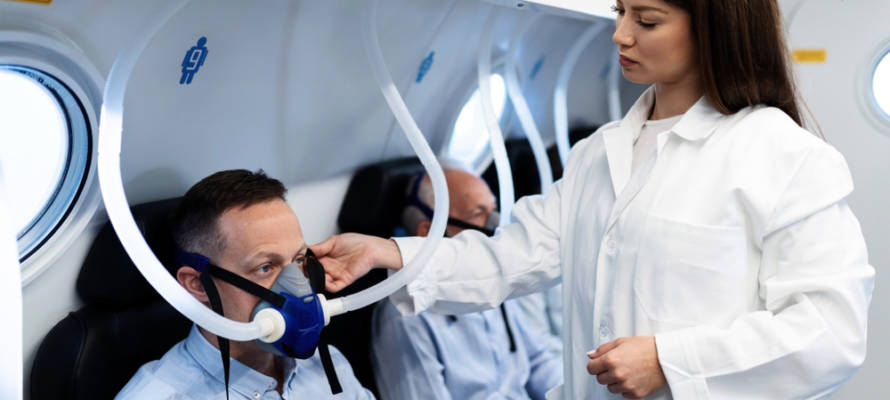Hyperbaric oxygen therapy improved stroke patients’ memory and attention, even months and years after the event.
By United with Israel Staff
Israeli scientists recently demonstrated that elevating oxygen concentration in the blood and injured brain tissue of stroke victims using an innovative treatment called hyperbaric oxygen therapy (HBOT) significantly improves brain tissue recovery, regardless of stroke location or cause.
HBOT can even improve cognition in patients who suffered strokes months or years earlier, according to a new study carried out at the Sagol Center for Hyperbaric Medicine and Research at Yitzhak Shamir Medical Center outside of Tel Aviv.
The study was published in Restorative Neurology and Neuroscience.
Stroke is the second highest cause of mortality and the third leading cause of disability worldwide. Stroke patients often find several cognitive domains are impacted, such as memory, attention, speech, information processing and motor skills.
“Despite nearly half of stroke survivors suffering from differing degrees of cognitive dysfunction, most rehabilitative efforts focus on restoring motor functions,” said Dr. Shai Efrati of the Yitzhak Shamir Medical Center, who co-authored the study.
“Our study shows that stroke-related cognitive deficits can be treated as brain wounds, regardless of the stroke’s location or origin – ischemic [restriction of blood supply to tissues] or hemorrhagic,” Efrati added. “The rehabilitation potential lies in the metabolic characteristics of the chronic damage or brain wound. By utilizing our HBOT protocols, the injured but viable brain tissue can be recovered even years after the acute insult.”
HBOT involves breathing pure oxygen in a pressurized room or tube. Prior to this study, HBOT was used to treat decompression sickness, a hazard of scuba diving. It is also used for treating wounds that do not heal as a result of diabetes, radiation injury, severe anemia and burns, in addition to being used for sudden vision or hearing loss, among other applications.
HBOT increases air pressure up to three times the normal amount. Under these conditions, lungs gather more oxygen than would be possible from breathing pure oxygen at normal air pressure.
Body tissue requires adequate oxygen supply to function properly. Injured tissue needs even more oxygen to heal.
Of the 162 patients tested in this study, all of whom suffered a stroke at least three months earlier, “86 percent achieved clinically significant improvement in their cognitive function,” said a study statement.
“The memory domain had the most prominent improvements. Hemorrhagic strokes had significantly higher improvement in information processing compared to ischemic strokes, though ischemic stroke patients still showed improvement. Left hemisphere strokes had a greater increase in the motor domain, compared to right hemisphere strokes.”
Yitzhak Shamir Medical Center is one of the largest hyperbaric medicine centers in the world. Its highly advanced large multi-place chambers treat more than 200 patients daily.
“We are thrilled to bring a new hope to stroke patients worldwide,” said Dr. Amir Hadanny of Shamir Medical Center, lead author of the study. “Significant improvements were demonstrated in all cognitive domains including memory, information processing speed, attention and executive functions.”
